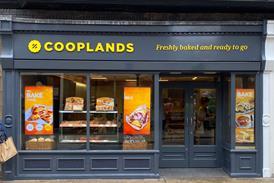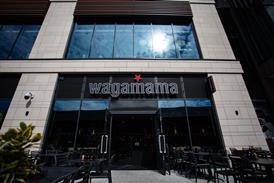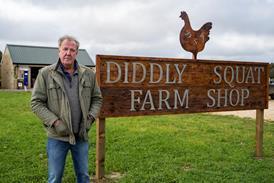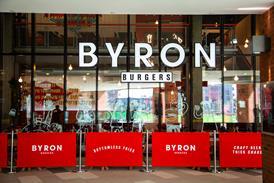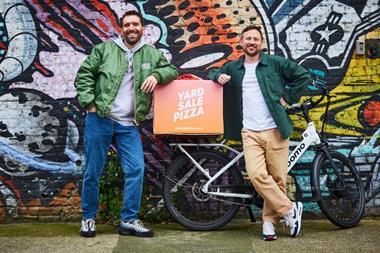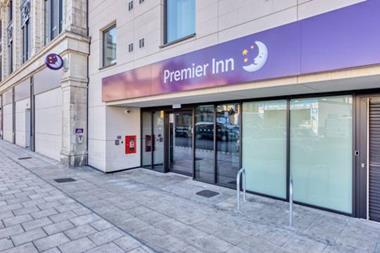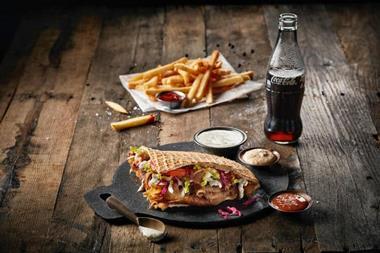Santander’s Andrew Tully reflects on his experiences working with casual dining restaurant chains before, during and after the recession – how and why some strategies worked – and looks at financing options
I have a confession. I am a banker. But I am lucky in many respects and one of those is having been able to work with many different casual-dining restaurant chains of all shapes and sizes throughout the economic cycle. Let me take a step back and share my thoughts on why we like your industry. After all, high levels of operational gearing, reliance on discretionary consumer spending, high staff turnover and low barriers to entry does not sound like an obvious candidate for leveraged finance. Did we learn nothing from previous years?
Well yes, but in some cases no. I recall bank credit committees for restaurant deals in the pre-crunch era where we agonised over the likely impact of recession on your industry. The big unknown then was consumer behaviour. We had lots of theories: the rich would continue to buy big yachts, the
middle-classes would keep their premium gym memberships. They didn’t. But the likes of you and me continued to take the kids out to Nando’s or Wagamama at the weekend no matter how worried we were about our jobs at the time.
Having been stress-tested, it is true to say your industry came out better than most.As well as the proven resilience of consumer spending on casual dining, the other major defensive factor is clearly your ability to hit the pause button on your roll-out.
Given the decent margins you typically generate, together with low working capital and maintenance capex requirements, you have the ability to generate significant cash should a ‘plan B’ be needed. This is no mere theory, I saw this first-hand with several chains I worked with at the market peak adopting a safety-first strategy during the dark days of 2008-10.
As well as proven resilience in a downturn I would also summarise the other positive attributes of your industry from the perspective of a lender as follows:
● Ease of understanding – While there is clearly significant complexity in managing day-to-day operations and in finding and opening new sites, as a lender it is relatively easy to pick ‘winners’ and structure appropriate financing solutions relative to many other industries we work with. In my view it’s usually pretty clear which concepts are successful and the relatively homogenous metrics of a branded chain usually make understanding historic financial performance and cash flow projections straightforward.
● Opportunities for follow-on lending –Restaurants are hungry beasts during a roll-out phase and we like lending to businesses we can support over multiple rounds of financing and with which we enjoy a long-term relationship. I am lucky to have a few of these long-term relationships myself – in one case more than 12 years – and my experience is that the depth of knowledge and understanding this creates is of genuine benefit to both parties. Trusted advisor status is the holy grail of relationship banking and we tend these precious orchids carefully.
● Job creation – If there was such thing as a £/job index in banking I suspect your industry would come out near the top. Clearly the cost of new sites depends on size, location and format, but assuming a new restaurant costing, say, £800,000, funded by a £480,000 loan from a bank, creates 20 FTE jobs, the cost of £24,000 per £ loan-ed strikes me as efficient use of capital from a CSR perspective. Banks are acutely aware of their social responsibilities and supporting business to create employment is a core objective at Santander.
So, what do we look for when assessing a chain seeking to finance a roll-out?
● Management – It’s difficult to articulate what makes a good management team, but I think it is finding the balance between vision, passion and systems which is appropriate to the size and maturity of the business. I look for knowledge of small details on the basis that if you sweat the small stuff it is likely you are all over the big issues. I particularly like working with founder managers who’ve worked on the front line as they seem to have a good eye for operational detail.
● Strength of proposition – Key to a bank’s willingness to support a roll-out is our view of the current strength and durability of the brand. Clearly we can benchmark comparative weekly sales and margins from similar chains and macro trends in the industry. Banks also place a lot of weight on like-for-like sales performance and the stability of gross margin of the core estate.
● Ambition v band width – Do you have sufficient resources in the business to execute your plan, and how does this compare with the pace of openings you have been able to achieve? How many sites do you plan to roll out in the near term in relation to the size of your existing estate? In the first instance, banks are lending against what they can reach out and touch, so the larger the ‘task’ in relation to the existing business, the less the financing is underpinned by proven earnings and the more reliance we place on drawdown controls or seek to compensate through higher interest margins.
● Track record – Banks will look carefully at past openings to understand the success of your site selection criteria, execution and also to understand if any failed to achieve plan.
Available options
How to fund growth? Size matters, at least in terms of the available funding options. So let’s consider the likely options at various stages in your evolution.
0-2 sites – This is the most difficult stage in the development of any concept. Unless you are part of that elite group of restaurateurs who have done it all before and seem to effortlessly attract outside investment, I suspect that opening your first site involved a hefty mortgage and/or involving family and friends. Clearly this is when the foundations of the business are being established in terms of perfecting the proposition, however a lack of cash flow and track record means traditional bank debt is unlikely to be the answer at this stage. Even some of the most successful and best known chains around today struggled at this stage and the failure rate across the industry is high, hence the likely requirement for true risk capital as the principal sources of finance.
3-10 sites – If you have got past the proof of concept stage with three or more sites and everything is pointing in the right direction, the outside world starts to take notice and some interesting options potentially arise. Much depends on your personal ambitions as after several years of grindingly hard work and significant personal debt this is often the stage where you choose to bring in an outside equity investor to de-risk your personal finances and potentially provide capital for growth. As well as the personal dimension, the advantage of this is the advice that an outside investor may bring to help in the development of the systems and controls needed to create a platform capable of supporting a roll-out.
Pick the right partner
There are a number of economic decisions to be made at this point. What level of equity are you prepared to give up and at what price? Also, how will this equity investment be structured in terms of shares and loan notes and what implications does this have on the share of the proceeds on exit? Any good marriage is not just about the money, and picking the right partner is vital. Are you seeking a passive investor with deep pockets or a partner with operational experience and resources to get actively involved? Also, what is their time horizon as this will likely drive the timing of a future financing event?
Bank debt can be possible at this stage, typically in the form of a capital expenditure facility to part-fund the cost of new sites, with the remainder coming from a combination of cash flow and equity. As an illustration, we provided a capital expenditure facility to fast-casual burrito chain Tortilla two years ago following an equity injection from private equity investor, Quilvest. Having done the hard yards in getting to nine sites, the company sought a fresh injection of capital to accelerate the growth of its by now tried and tested format. Quilvest’s experience of owning YO! Sushi was undoubtedly a factor in their choice. I think this arrangement worked well for all parties and supported Tortilla’s growth to 21 sites before we refinanced it with a larger facility on more generous terms last November, which should see them through to 50 sites.
Underlying performance
This is a common arrangement under which you benefit from a relatively cheap committed funding source for a proportion of the acquisition and fit-out costs of new sites, normally 50%-60%. To make this work, the availability of such a facility will likely be linked to the underlying performance of the business being broadly in line with plan, and the pace and cost of the roll-out not exceeding an agreed level. Depending on your ambitions or the availability of traditional banking financing at this stage in your development there are other options available, summarised as follows:
● Peer-to-peer lending – ‘Crowd Funding’ /‘Burger Bonds’, as it is variously known, is a way of raising capital directly from a potentially large number of individual investors. This appears to come in both equity and debt forms, however I suggest you will need to have clear line of sight over your ability to repay this or you are taking a risk on your ability to refinance this at the end of its term. You would also need to understand what happens if you under- or overshoot your plan. Can you get access to follow-on funding or who do you negotiate with if there is a problem?
● Intermediate Capital – Also known as mezzanine finance. Typically provided by a bank (such as our own Growth Capital solution) or debt fund, this is a term loan offering potentially more flexibility than a standard bank loan in terms of capital repayments, financial covenants and drawdown controls. Additionally, all or part of the interest cost may be rolled up and paid on completion, also known as ‘paid in kind’ or ‘PIK’. It will be more expensive, but the additional flexibility and cash flow headroom are often seen as attractive in enabling you to use more of your own operational cash flow to fund growth. Such a loan can be a useful way to avoid diluting your own shareholding through selling part of the business to fund growth and therefore maximise the value of your own shareholding on an eventual partial sale/exit.
11-30 sites – I’m assuming you are generating an annualised EBITDA before start of costs of £2m-plus, and that the quality of your estate and your growth rate is what you hoped it would be. That will make you a much sought-after ‘asset’ by both banks and private equity and this competition can work to your advantage. Key to unlocking this is getting the right advice. Unless you or your finance director have done this before, you will not necessarily know the best terms available in the market. One option is to talk to several different banks and invite ‘first stage credit approved term sheets’. Banks perform better when they know there is someone else. A private equity backer is also likely to have significant experience to bring to this party, and there are also many debt advisory firms to choose from, including the big accountancy firms, corporate finance houses or specialist boutiques whose job is to seek the best deal for their clients.
More than 30 sites – At this level, likely £8m EBITDA and above, the banking market becomes even more competitive as additional banks and debt funds come out to play. The potential runway of your format is also likely to be more proven given your established level of brand recognition in the market and with landlords, hence your business is likely to attract a higher valuation multiple. But if you’ve got to this size, you know that already.
Andrew Tully is head of structured finance – financial sponsors at Santander Corporate & Commercial Banking. He can be contacted at andrew.tully@santander.co.uk.


